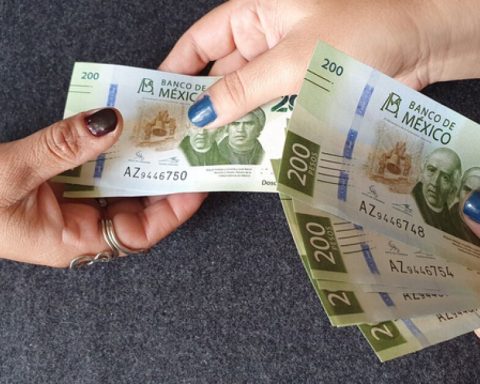President Alberto Fernández highlighted this Friday the need to “value the contribution of women to the development of our society,” by giving a new nomination to a room in the Casa Rosada in tribute to Argentine scientists.
“We want to value the contribution of women to the development of our society,” said the President, leading the act in which the Casa Rosada Scientists’ Hall was renamed the Argentine Science Hall.
Within this framework, the number of personalities honored was increased as one more contribution in pursuit of contributing to gender equality and to recognize the historical journey of women in the field of science and technology.

“We have to do much more so that society ends all kinds of discrimination and values everyone in the same way,” said the president upon discovering the plaque with the new name of the room, located on the first floor of the Government House.
After making a tour to observe the incorporated paintings, Fernández affirmed that “today we are taking a symbolic step but that symbolism occurs in the house where Argentina is governed and it is a message for everyone: from the Government we do not want more discrimination and we want to put value the contribution of women to the development of our society”.
“We have to do much more so that society ends all kinds of discrimination”Alberto Fernandez
The ministers of Women, Gender and Diversity, Elizabeth Gómez Alcorta, and of Health, Carla Vizzotti, participated in the ceremony; the Minister of Science, Technology and Innovation, Daniel Filmus; the spokeswoman for the Presidency, Gabriela Cerruti; the president of the Conicet, Ana María Franchi; the Secretary General of the Presidency, Julio Vitobello; and the writers of the book “Scientists from Here: Stories that change history”: Carolina Luz Hadad, Julieta Irene Elffman, Julieta María Alcain and Valeria Edelsztein.
The initiative was carried out within the framework of the National Program for Gender Equality in Science, Technology and Innovation, in order to “include the entire group that makes up this field without gender distinctions,” the Government reported in a statement.

“This is a contribution from the Presidency to generate parity in the representation of women and distort processes that reproduce and legitimize the gap in the participation of groups that have historically been invisible on the public agenda,” explained the Casa Rosada.
The activity was carried out to celebrate the International Day of Women and Girls in Science, a date promulgated by the United Nations Organization (UN) that aims to achieve equitable participation in training and studies to break the gap of gender.
The situation demonstrates, in this sense, the need to have an active State in terms of equality policies that includes appropriate manifestations of all the organizations that comprise it.
“Not only from the symbolic, but also in the symbolic we are taking key steps”, highlighted Minister Gómez Alcorta.
“The first five universities were born in the 11th century, and we arrived at the universities in the 19th century. Those almost eight centuries of difference made it possible for us to be represented in this room only today”celebrated.
@CSJ@
Meanwhile, Filmus indicated that “this is one of the transversal lines on which the Ministry of Science and CONICET are working very hard so that there is comprehensive equality.”
And he stressed that “Argentina is currently proud to have seven of the great research centers led by women.”
In turn, Vizzotti valued the research work of the writers of the book “Scientists from Here: Stories that change history” so that “these trajectories can be made visible.”

The Hall of Scientists was inaugurated on September 1, 2009 in order to honor great personalities in the history of Argentine science.
From that moment on the walls the photographs of: Emma Pérez Ferreira, Florentino Ameghino, Gregorio Klimovsky, José Antonio Balseiro, Jorge Alberto Sábato, Manuel Sadosky, Francisco Pascasio Moreno, Ramón Carrillo, Rebeca Gerschman, René Gerónimo Favaloro and Salvador Mazza.
Three Nobel Prize winners are also highlighted: Bernardo Alberto Houssay, Luis Federico Leloir and César Milstein.
The incorporated scientists
The scientists who were incorporated into the room are:
• Eugenia Priest of Lustig: a doctor of Italian origin who introduced the in vitro cell culture technique in Argentina. She studied with Jonas Salk, creator of the polio vaccine, and was the first to test and mass-produce this vaccine in our country during the 1956 epidemic. She was Head of Virology at the Malbrán Institute.
• The four of Melchior (Irene Bernasconi, María Adela Caría, Elena Martínez Fontes and Carmen Pujals): they were the first female scientists to lead an expedition to Antarctica in 1968. They worked at the Argentine Museum of Natural Sciences “B. Rivadavia”. They contributed to the knowledge of marine algae, siliceous sponges, stars, sea urchins and other invertebrates, and carried out environmental microbiology studies.
• Elisa Bachofen: She was the first female engineer in Argentina and Latin America, received in 1918. Co-founder of the National Feminist Union and pioneer of technical education for women. In addition to being an inventor, writer and teacher, she was director of road works at the Directorate of Bridges and Roads for more than 20 years.
• Rebecca Guber: PhD in Mathematics, she was one of the most important people in the development of computing in Argentina. She was executive secretary of the Institute of Calculus in the Faculty of Exact and Natural Sciences of the UBA. She worked for the development of Argentine computing from public policy, civil society, the university and the private sector.
• Sara Rietti: She was director of the Master’s Degree in Policy and Management of Science and Technology, the oldest at the UBA. She was Chief of Staff of the Secretariat of Science and Technology during the government of Raúl Alfonsín. She is an active member of the National Interdisciplinary Forum Women in Science, Technology and Society.
• Elvira Lopez: in 1901 she became the first graduate of the Philosophy and Letters course at the UBA. She was also a pioneer of feminist theory: she raised the problem of how to achieve moral and economic independence as women.
• Telma Reca: pioneer in the child and adolescent psychiatric clinic in Argentina. She is a full professor of various chairs. She is the creator, along with other people, of the first study plan for the Psychology degree at the UBA.
• Hetty Bertoldi de Pomar: She was one of the first Argentine geologists, a pioneer in her field, a reference and passionate about the study of silicophytoliths, key structures in paleo and archaeobotany, which allow us to know how our ancestors lived and what the landscapes were like thousands and even millions of years ago. years.

















